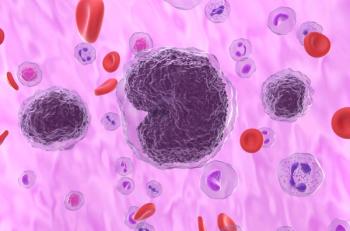
Combination of Bleomycin and G-CSF Does Not Increase Risk for Bleomycin-Induced Pulmonary Toxicity
A study has found no evidence that bleomycin plus granulocyte-stimulating factor (G-CSF) increases the risk for bleomycin-induced pulmonary toxicity in patients with Hodgkin lymphoma.
Adriamycin, bleomycin, vinblastine, dacarbazine (ABVD) is the standard of treatment for most patients with Hodgkin lymphoma, and there is conflicting data on whether there is an increased risk of pulmonary toxicity when bleomycin is combined with granulocyte-stimulating factor (G-CSF) for the treatment of neutropenia. However, a study has found no evidence that the combination increases the risk for bleomycin-induced pulmonary toxicity in patients with Hodgkin lymphoma.
Researchers conducted a single-site retrospective analysis of 54 patients diagnosed with Hodgkin lymphoma between January 2003 and July 2015. Data was extracted using the Mount Sinai Data Warehouse. The patients received at least 1 dose of bleomycin and were evaluated for pulmonary toxicity from the day of the first dose until 1 year after initiation of bleomycin. Patients were stratified by whether or not they received filgrastim during the treatment period, and the median time to administration of the G-CSF after the first dose of bleomycin was 14 days.
Risk factors for pulmonary toxicity while being treated with bleomycin included age over 40, preexisting pulmonary disease, renal dysfunction, smoking history, cumulative bleomycin dose of over 300 unites, and the need for supplemental oxygen.
Twenty-one patients received bleomycin alone and 33 received both bleomycin and filgrastim. There were no statistically significant differences between the demographics or risk factors of the 2 groups, with 9 (43%) patients in the bleomycin-only group and 13 (39%) in the bleomycin plus filgrastim group over age 40.
Out of the 54 patients, 10 experienced bleomycin-induced pulmonary toxicity, 3 of which received bleomycin alone and 7 received a combination of the 2 treatments. However, the researchers noted, the difference between the groups was not statistically significant (p= 0.50).
The researchers also performed a subgroup analysis to determine the time to bleomycin toxicity following initiation of the treatment and found that all pulmonary toxicity occurred within the first 9 months after the start of treatment.
“Interestingly, the timing of pulmonary toxicity varied between our 2 cohorts,” explained the researchers. “In the bleomycin and G-CSF cohort, all 7 patients who developed pulmonary toxicity did so within the first 6 months of starting therapy, with the majority developing toxicity from 3-6 months of starting therapy.”
Meanwhile, those in the bleomycin-only cohort experienced toxicity more gradually, with toxicity occurring up to 6-9 months from the start of therapy. “While the authors could not make definitive conclusions regarding this finding, it may suggest that those predisposed to developing bleomycin-induced pulmonary toxicity, G-CSF will accelerate the development of this toxicity,” they added.
Reference:
Binder A, Rai S, Steinberg A, et al. The use of filgrastim in patients with Hodgkin lymphoma receiving ABVD. Int J Hematol Oncol Stem Cell Res. 2017;11(4):286-292.
Newsletter
Stay ahead of policy, cost, and value—subscribe to AJMC for expert insights at the intersection of clinical care and health economics.













































